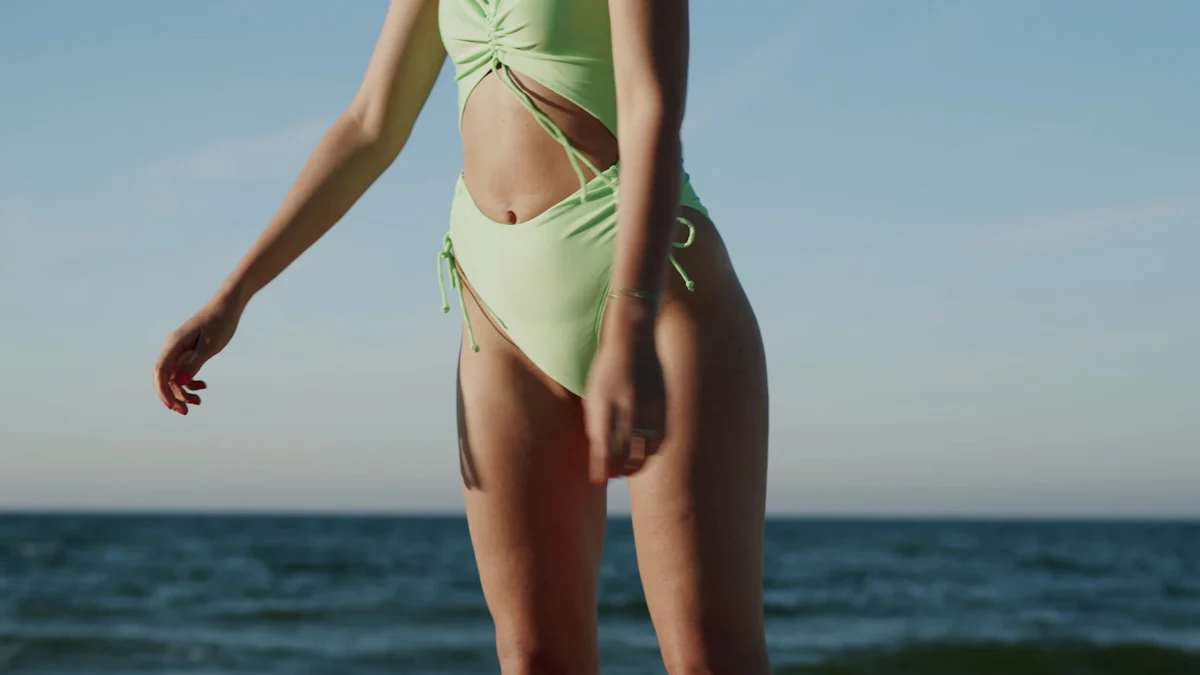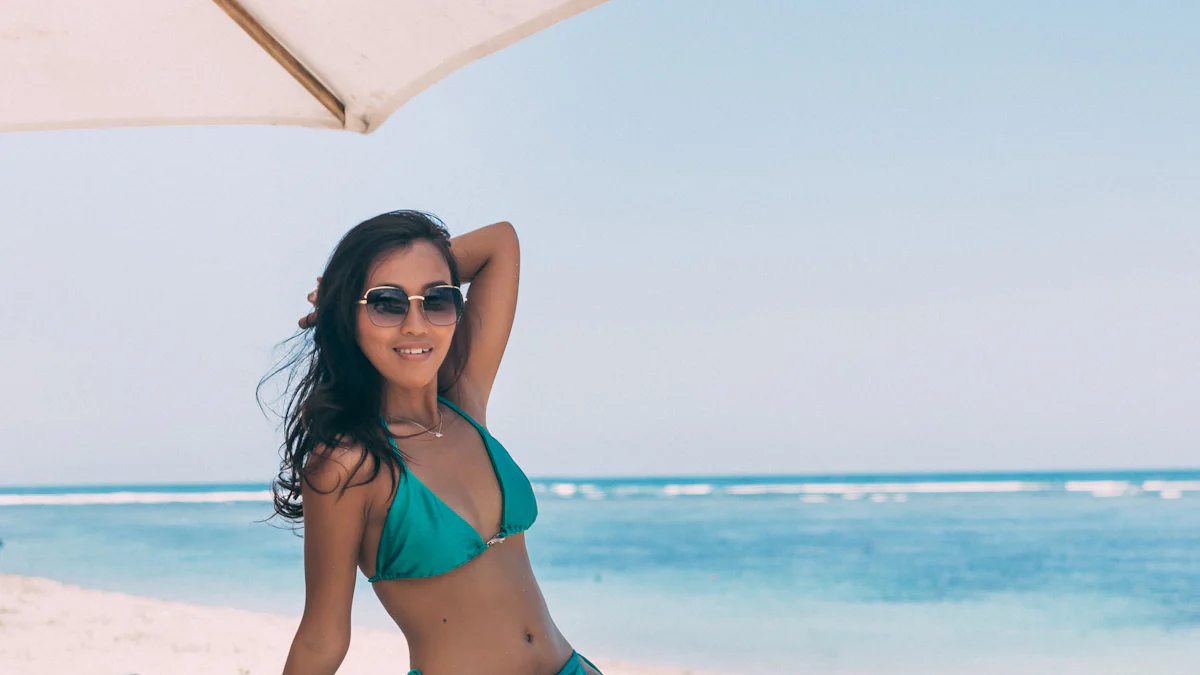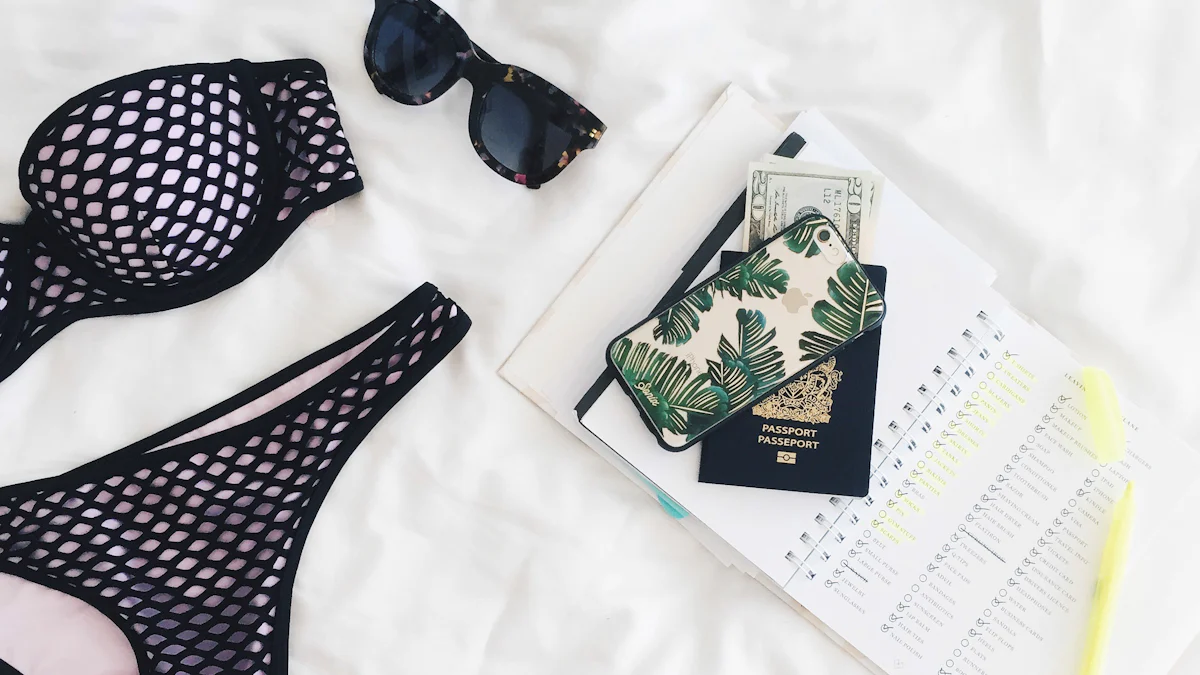 About this enhanced version. The original article had clear purpose and a complete high-level flow, but lacked original methodology, execution templates, concrete KPIs, and detailed risk/compliance guidance. This upgrade keeps the structure and all original images, while adding frameworks, tables, and ready-to-use checklists.
About this enhanced version. The original article had clear purpose and a complete high-level flow, but lacked original methodology, execution templates, concrete KPIs, and detailed risk/compliance guidance. This upgrade keeps the structure and all original images, while adding frameworks, tables, and ready-to-use checklists.
The global swimwear market is growing fast—from $20.47B in 2023 toward $30.59B by 2032—so competition is intense. Winning brands differentiate through custom prints, fit engineering, and credible sustainability. This playbook turns high-level steps into an execution system you can run: research, design, materials, ethical sourcing, testing, marketing, metrics, and compliance.
Key Takeaways
Pick a sharp positioning (e.g., sustainable custom prints, modest performance swim) backed by data.
Design with personas (needs, pain points, willingness to pay), not just demographics.
Choose fabrics for performance + print fidelity (stretch, recovery, UPF, chlorine resistance).
Build a brand system (story, visuals, tone) that’s consistent everywhere.
Run your launch like a lab with KPIs, experiments, and post-mortems.
Embed ethics & compliance (labor, materials, data, IP) from day one.
Identify Your Niche and Understand Your Audience
Research Market Trends
Analyze current swimwear trends and customer preferences.
Blend qualitative scans (social listening, UGC, community polls) with quantitative inputs (search volume, competitor SKU velocity). Track hashtags like #customswimwear, #sustainablebikini, #longsleeveswim. Map the “print stories” customers save and share—botanicals, geometrics, personalized monograms.
Identify gaps your collection can fill.
Under-served sizes or modest silhouettes with UPF50+ and quick-dry lining.
Made-to-order custom print sets for bridal parties or teams (low inventory risk).
Adaptive fits (maternity, post-surgery support) with soft-hand, high-recovery fabrics.
Define Your Target Audience
Personas & expected value
“Sophia” (28) — fashion-forward, wants exclusive prints, shops on mobile.
Target AOV: $110–$140 | Hook: limited custom drops.
“Mark” (35) — family trips, durability matters, easy care.
Target AOV: $75–$95 | Hook: chlorine-resistant trunks + matching kids’ prints.
Choose a Niche
Anchor on style, function, or values
Custom-Print Niche: on-demand sublimation, monograms, team logos, mix-and-match sizing.
Luxury Capsule: limited editions, artisanal textures, Italian lycras, small-batch drops.
Performance/Modest: long-sleeve sets, hydrodynamic seaming, UPF50+ and PBT blends.
Design and Create a Swimwear Collection

Develop a Signature Style
Make your brand recognizable without the logo.
Create a print language (motifs, scale rules, spacing) and a Pantone map.
Define silhouette “blocks” (triangle, bandeau, long-sleeve, high-waist) with consistent proportions.
Draft a brand grid for photography (angles, backgrounds, skin-tone inclusive casting).
Select High-Quality Materials
Beyond aesthetics—measure performance & printability.
Property | Why it matters | Target/Method |
|---|---|---|
Stretch & Recovery | Fit retention, anti-sag | Elastane 18–25%; ASTM D2594 |
Chlorine Resistance | Longevity in pools | PBT or treated blends |
Color Fastness | Print vibrancy | ISO 105 (light, wash, sea) |
UPF Rating | Sun safety | UPF50+ tested |
Handfeel & Lining | Comfort, modesty | Soft touch; quick-dry lining |
Sustainable picks: Econyl® (recycled nylon), Repreve® (recycled PET), hemp blends.
Printing Methods for Swimwear (Customization Focus)
Sublimation (Poly/Poly-rich): best for vivid, all-over prints; low water use; ideal for on-demand.
Digital Direct to Fabric (DTF/DTG variants): high detail; check stretch compatibility and handfeel.
Screen Printing: spot colors, logos; ensure stretch additives; test for cracking/peeling.
Heat Transfer Vinyl (HTV): small runs/personalization; verify breathability & recovery.
Print QA Tip: Build a “strike-off board” logging ink sets, pre-treats, temperatures, and wash results.
Align Trend with Function
Design checklist (save before sampling)
Seam tension & elastic mapping (no dig-in).
Liner opacity wet & dry; bleed-through test.
Hardware corrosion/salt-spray check.
Graded size tables with mix-and-match tops/bottoms.
Source Ethical and Reliable Manufacturers
Find the Right Manufacturer
Supplier scorecard (use at onboarding and quarterly)
Metric | Definition | Target |
|---|---|---|
Lead-Time Accuracy | % POs on time | ≥ 95% |
Sample First-Pass Rate | Approved without rework | ≥ 85% |
Material Traceability | Certificates, batch IDs | 100% |
QC Defect Rate | Major defects per 100 units | ≤ 1.5 |
Sustainability | Energy/water reporting | Quarterly |
Always request PP (pre-production) samples in full trims and print runs to validate color, stretch, and stitching.
Prioritize Ethical Production
Labor: WRAP/SA8000 or equivalent, auditable wage slips, no forced labor.
Environment: wastewater controls for dye/print; chemical lists per OEKO-TEX® or ZDHC.
Transparency: publish a yearly Impact & Compliance summary.
Test and Refine
Minimum two test loops
Fit Round: internal fit on size run; stretch mapping; photos & notes.
Wear Test: 10–15 users over 2 weeks; pool/sea/wash cycles; survey & NPS.
Track durability (shape retention after 10 washes), print fade delta E, and user comfort score.
Market and Launch Your Swimwear Collection

Brand Identity
Positioning Framework
Essence: Ocean-conscious confidence.
Promise: Custom prints, inclusive fits, technical comfort.
Tone: Empowering, modern, warm.
Assets
Color system & print scales (vibrancy on fabric).
Photography rules (angles, backgrounds, inclusive casting).
Packaging: recycled mailers; print-story cards.
Digital & Social Plan (with KPIs)
Stage | Core Tactics | Primary KPIs | Targets |
|---|---|---|---|
Awareness | Reels/TikTok print timelapses; collabs; PR seeding | Reach, Video Views, Saves | 100k views in 30 days; SVR ≥ 4% |
Consideration | UGC try-ons; size guides; quiz | CTR, Time on Page | CTR ≥ 2.5%; ToP ≥ 90s |
Conversion | Bundles; limited custom drops; free exchanges | CVR, AOV | CVR ≥ 2.8%; AOV ≥ $105 |
Loyalty | VIP prints; refer-a-friend; repair program | Repeat Rate, LTV | Repeat ≥ 25% in 6 mo |
Influencers & Ambassadors
Favor micro-influencers (10–50k) for higher authenticity; provide custom print codes.
Track with unique URLs; pay on performance (blended CPA targets).
Launch “Signature Print” collabs quarterly to create urgency.
Promotions that Fit Swim
Limited-edition drop calendars (seasonal palettes, travel capsules).
Bundle builder (top+bottom+cover-up) with mix-and-match sizing.
Giveaways tied to UGC “best print story” submissions.
Stand Out in a Competitive Market
Solve Customer Pain Points
Inclusive sizing (XS–4X) and mix-and-match tops/bottoms.
Virtual fit tools; post-purchase alterations/strap kits.
Clear care cards to extend print life and fabric recovery.
Embrace Sustainability
Annual Impact Report (materials %, water/energy per unit, take-back stats).
On-demand printing to reduce overproduction and dead stock.
Supplier energy/water dashboards published quarterly.
Ensure Inclusivity
Diverse size runs, modest options (e.g., long-sleeve sets), and cultural preferences.
Marketing that features real bodies and multi-age casting.
Risk, Compliance, and Longevity
Product & Materials
Chemicals: OEKO-TEX® Standard 100 or ZDHC conformance.
Hardware: nickel-release limits; salt-spray tests.
Labeling: fiber content, care, origin—per target market rules.
Business & Data
Privacy: Protect customization data; GDPR/CCPA consent flows.
IP: Register logos/prints; document art rights for collabs.
Supply: dual-source critical fabrics; time buffers in PO plans.
Execution Templates & Checklists
Design Room Checklist (Pre-Sample)
Block patterns graded and reviewed for mix-and-match.
Print scale approved on size S & XL strike-offs.
Elastic spec (width, stretch %) matched to panel tension.
Liner opacity test (wet & dry), bleed test on lights.
UPF & fastness lab tests booked.
Sample & QA Runbook
Prototype v1 → internal fit photos, notes, pattern edits.
Strike-offs → record ink, temp, dwell, pressure; wash x5.
PP Sample → trims/hardware final; create golden sample.
AQL Inspection → major ≤ 1.5, minor ≤ 4.0.
Launch KPI Dashboard (starter)
Traffic: sessions, CTR to PDP, organic vs. paid split.
Shop: add-to-cart %, CVR, checkout drop-off step.
Merch: size sell-through, print-level ROS, return rate by reason.
Retention: repeat rate 30/90/180d, LTV:CAC.
Quick Start: Launch with 8–12 SKUs (2–3 tops, 2–3 bottoms, 2 one-pieces, 1 long-sleeve set), each in 2 core prints + 1 limited custom drop. Keep MOQ low with on-demand sublimation for customs.
FAQ
How do I choose the right fabrics for my swimwear collection?
Pick durable, comfortable, water-friendly fabrics. Nylon/poly with 18–25% elastane covers most needs; add PBT for chlorine resistance. For eco options, try Econyl® or Repreve®. Always lab-test for stretch recovery, color fastness, and UPF.
What’s the best way to find a reliable swimwear manufacturer?
Shortlist specialists, review certifications, and inspect client work. Use the supplier scorecard above, demand full traceability, and approve PP samples before bulk. Align on ethics (labor, wastewater) and quality thresholds.
How can I make my swimwear collection stand out?
Own a distinctive print language and inclusive fit system. Offer mix-and-match sizing and limited custom drops. Tell authentic sustainability stories backed by measurable impact.
What’s the most effective way to market my swimwear collection?
Show process: design sketches, strike-offs, try-ons. Use Reels/TikTok, creator collabs, and quizzes for fit discovery. Track KPIs (CTR, CVR, AOV, repeat rate) and iterate weekly.
How do I ensure my swimwear fits all body types?
Grade blocks for a wide size range, enable mix-and-match, and include adjustable elements. Collect post-purchase fit feedback and refine patterns by cohort.
Conclusion
To build a custom & printed swimwear line that truly sells, pair creative vision with a rigorous operating system: research, fit science, print QA, ethical production, disciplined marketing, and KPIs. Start lean, learn fast, publish your impact, and keep your brand promise visible in every stitch and print.
Market reference: Fortune Business Insights — Swimwear Market. Additional ideas inspired by industry resources and practitioner best practices.
